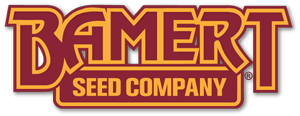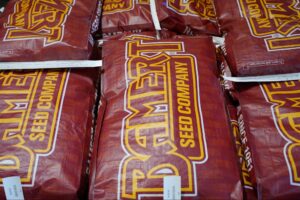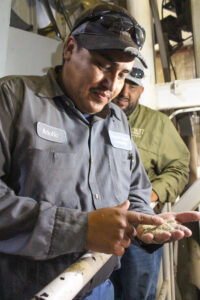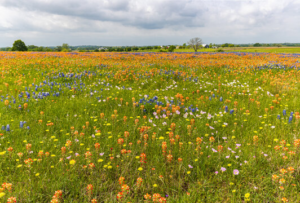Why Pollinator Habitats Matter
One of the simplest and most impactful ways to support pollinators is by planting native wildflowers. Choosing the best wildflower seeds ensures your habitat is not only beautiful but also a lifeline for wildlife.
Bees, butterflies, and hummingbirds are all pollinators that play a crucial role in the health of ecosystems and agricultural landscapes.
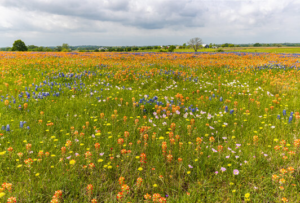 Pollinators by the Numbers: There are over 4,000 types of bees in the U.S. but honey bees are the primary commercial pollinator. Their work is valued at $18 billion per year.
Pollinators by the Numbers: There are over 4,000 types of bees in the U.S. but honey bees are the primary commercial pollinator. Their work is valued at $18 billion per year.
At Bamert Seed Company, we know that creating a successful pollinator habitat starts with selecting the right native seeds.
Let’s walk through the top wildflower species, why they matter, and how to get started.
Top Wildflower Seeds for Pollinator Habitats
Choosing the right wildflower seeds is key to building a thriving pollinator habitat. Let’s explore some top native species that will attract bees, butterflies, and other vital pollinators to your land.
Black-Eyed Susan (Rudbeckia hirta)
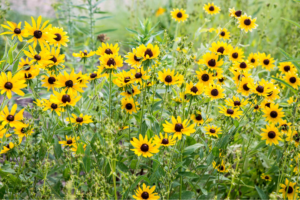 This iconic yellow-petaled flower is a magnet for butterflies and bees. It blooms from late spring through fall, providing an extended source of nectar and pollen.
This iconic yellow-petaled flower is a magnet for butterflies and bees. It blooms from late spring through fall, providing an extended source of nectar and pollen.
- Pollinators: Butterflies, bees, beetles
- Ideal For: Roadside restoration, prairie projects, and backyard gardens
- Shop Now: Black-Eyed Susan Seeds
Texas Bluebonnet (Lupinus texensis)
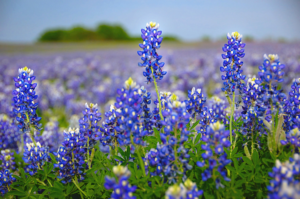 A true Texas classic, Bluebonnets offer clusters of rich blue flowers that draw in pollinators and enrich the soil with nitrogen, supporting ecosystem health.
A true Texas classic, Bluebonnets offer clusters of rich blue flowers that draw in pollinators and enrich the soil with nitrogen, supporting ecosystem health.
- Pollinators: Bees, butterflies
- Ideal For: Native landscaping, highway beautification, wildflower meadows
- Shop Now: Texas Bluebonnet Seeds
Indian Blanket (Gaillardia pulchella)
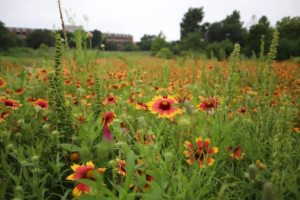 With fiery red and yellow petals, this native wildflower thrives in tough conditions and draws in pollinators throughout the summer.
With fiery red and yellow petals, this native wildflower thrives in tough conditions and draws in pollinators throughout the summer.
- Pollinators: Bees, butterflies
- Ideal For: Erosion control, large-scale restoration
- Shop Now: Indian Blanket Seeds
How to Design Your Pollinator Habitat
Creating a successful pollinator habitat involves more than just scattering seeds. From plant selection to layout, every decision impacts how well your habitat supports local wildlife.
Step 1: Choose Native Seeds
Native plants are adapted to your region’s soil and climate, making them more resilient and better suited to support local wildlife. Using a native seed mix ensures a diverse and sustainable habitat.
Pro Tip: Try the Hill Country Blend for a well-rounded mix of wildlife-supporting native grasses that can be paired with Texas Wildflower Blend.
Step 2: Plan for Bloom Successions
Pollinators need food sources all season long. Choose wildflowers with staggered bloom times to provide continuous forage.
- Early Season: Texas Bluebonnet, Lemon Mint*
- Mid-Season: Lanceleaf Coreopsis*, Clasping Coneflower*
- Late Season: Maximilian Sunflower, New England Aster*


*For blends that include a mixture of early, mid, and late-season blooms, explore our wildlife & pollinator section.
Step 3: Prepare and Plant
Proper site preparation is key to wildflower success.
Clear existing vegetation, lightly till the soil, and broadcast seeds evenly.
For larger projects, use Seed-Spec or contact us to design a custom blend tailored to your soil and goals.
Why Native Seeds Are the Best Choice
Native wildflowers have evolved alongside local pollinators, creating a symbiotic relationship that non-native species can’t match. They require less water, resist pests, and improve soil health.
For example, Purple Prairie Clover enriches the soil with nitrogen, while Maximilian Sunflower offers late-season nectar when other flowers fade. These plants don’t just attract pollinators — they strengthen ecosystems.
Start Your Pollinator Habitat with Bamert Seed
Whether you’re managing a large conservation site or planting a backyard meadow, Bamert Seed Company is here to help you select the best wildflower seeds for your project.
Check out our Wildflower Collections or use Seed-Spec to build your own custom mix. Need expert guidance? Contact our specialists for personalized recommendations.
